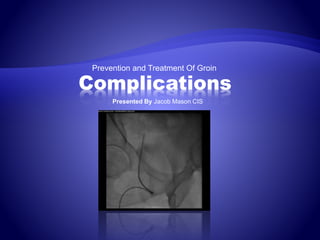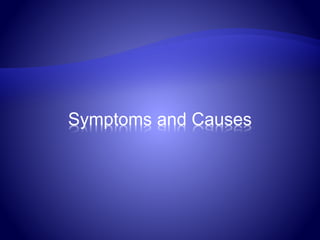The document discusses the prevention and treatment of groin complications related to femoral artery access during cardiac procedures, emphasizing the importance of proper techniques for managing bleeding and hematomas. It outlines various types of complications, risk factors, signs and symptoms, treatment strategies, and management myths, highlighting the significance of careful monitoring and intervention. Key points address the effectiveness of manual compression versus closure devices and the critical factors for achieving hemostasis in at-risk patients.



















































